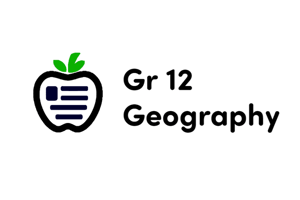Podcast
Questions and Answers
What are contour lines and what do they represent on a topographic map?
What are contour lines and what do they represent on a topographic map?
Contour lines are lines on a topographic map that connect points of equal elevation. They represent the height or altitude of the land.
Why are contour lines important for hikers and other outdoor enthusiasts?
Why are contour lines important for hikers and other outdoor enthusiasts?
Contour lines are important for hikers and outdoor enthusiasts because they provide information about the elevation and steepness of the terrain, helping them plan routes and navigate safely.
How do contour lines help in understanding the elevation of an area?
How do contour lines help in understanding the elevation of an area?
Contour lines help in understanding the elevation of an area by showing the shape and form of the land. The closer the contour lines are to each other, the steeper the elevation, while wider spacing indicates flatter terrain.
What are index contours and why are they used on a topographic map?
What are index contours and why are they used on a topographic map?
What are the two rules that contour lines follow on a topographic map?
What are the two rules that contour lines follow on a topographic map?
How does the spacing between contour lines indicate the steepness of a hill or slope?
How does the spacing between contour lines indicate the steepness of a hill or slope?
What are hachures and how are they used in topographic maps?
What are hachures and how are they used in topographic maps?
What information does a geologic map contain?
What information does a geologic map contain?
What do different colors on a geologic map represent?
What do different colors on a geologic map represent?
How are igneous rocks typically represented on a geologic map?
How are igneous rocks typically represented on a geologic map?
Flashcards are hidden until you start studying
Study Notes
Topographic Maps Basics
- Topographic maps show elevation and are used by people like hikers to know the elevation of an area.
- Contour lines on a topographic map connect points of equal elevation, meaning everything on the line is the same height or altitude.
- Contour lines are shown in a light brown color on most maps.
- Index contours are lines with numbers on them, showing the exact elevation of a specific line.
- Index contours are not labeled on every line due to space limitations, and are typically only labeled in two or three places.
Contour Rules
- Contour lines cannot cross, as this would mean a location has two different elevations.
- Lines form circles around hills or depressions.
- The contour interval is the distance between any two side-by-side lines, and represents the elevation change.
- The closer the lines, the steeper the hill; and the farther apart, the gentler the slope.
Hills and Depressions
- Contour lines close around hills and depressions, forming concentric circles as elevation increases.
- Hachures are small lines that show depressions or holes on a topographic map, and appear as teeth in an open mouth.
Geologic Maps
- Geologic maps include topographic lines, ages and types of rocks, and show geologic features.
- Geologic maps have more information layered on top of the topographic map, including color-coded representations of different types of rocks and ages.
- Black lines or markings on a geologic map typically represent geologic markings, contrasting with the brown contour lines showing elevation.
- Colors on a geologic map represent different types of rocks or ages, and are usually explained in the key or legend.
Studying That Suits You
Use AI to generate personalized quizzes and flashcards to suit your learning preferences.




